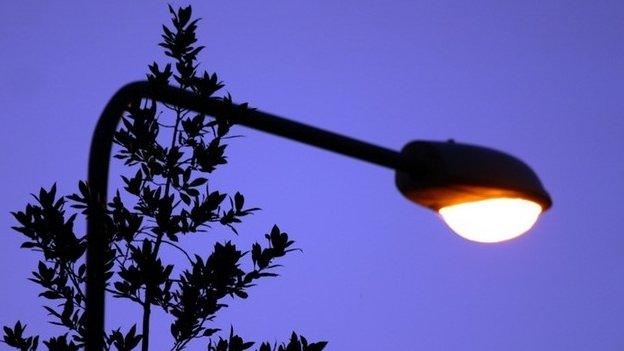LED street lights to be installed across Northern Ireland
- Published
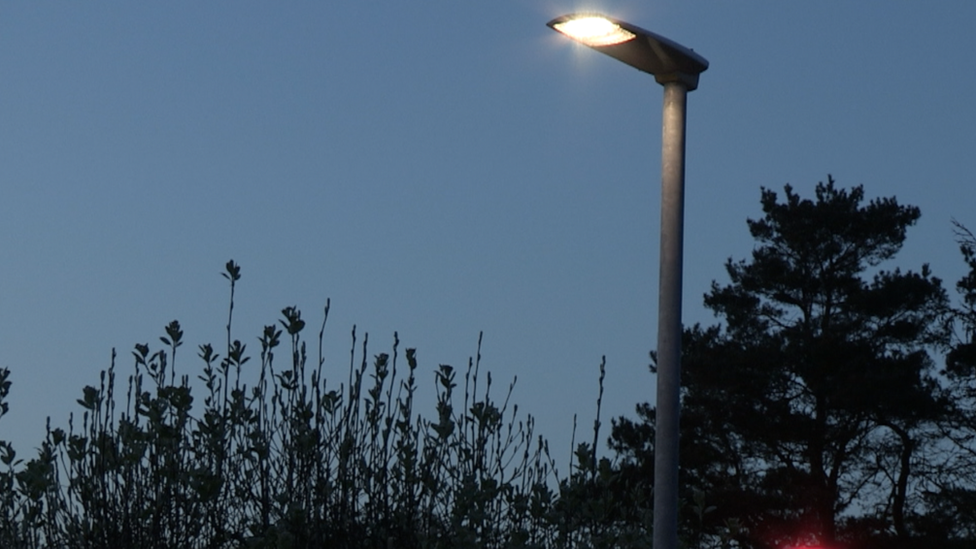
Officials say the new lights offer long-term savings in terms of electricity usage and maintenance costs
A scheme to replace yellow sodium street lights with LED alternatives is to be rolled out across Northern Ireland.
At present there are nearly 300,000 street lights here - roughly one for every six people.
But while they play a role in road safety and security, they also produce huge quantities of light pollution.
Traditionally street lights have taken the form of yellow sodium lights but that is changing.
The Department for Infrastructure started the switch with a pilot scheme in Banbridge and Armagh in 2015, and that is now being rolled out across Northern Ireland.
Officials say the new lights offer long-term savings in terms of electricity usage and maintenance costs - as well as less light pollution.

The rise of LED lights
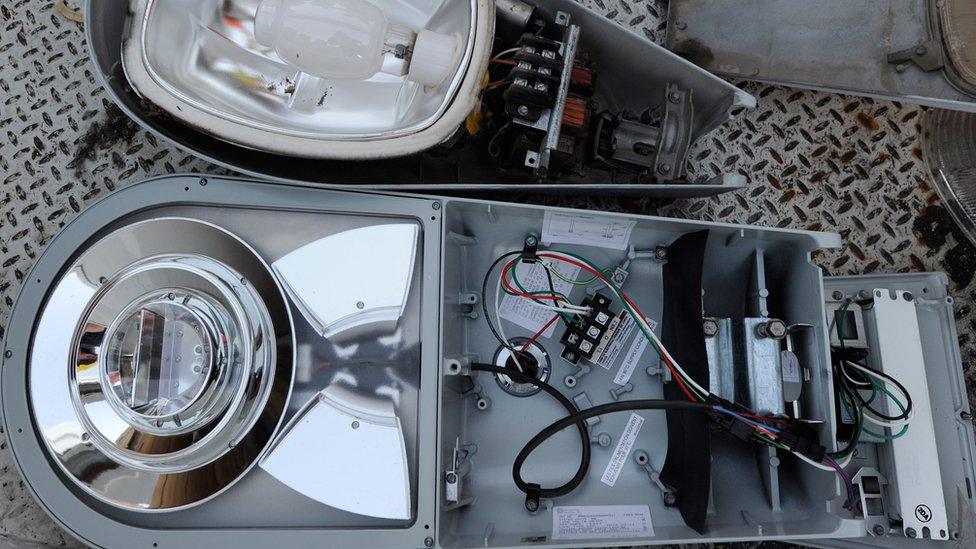
Light emitting diodes - or LEDs - first appeared as red lights in pocket calculators and digital watches in the 1960s
Now white LEDs are used in everything from car headlights to camera flashes and home lighting
The first LED street lights were rated 4,000 Kelvin or higher on the temperature chart used to describe colour
The latest LEDs have lower Kelvin ratings and produce a softer, amber light and less potentially harmful blue light
Manufacturers claim they are are up to 50% more energy-efficient than traditional yellow sodium lights and last for up 20 years, instead of two to five

So far, about 50,000 of the new lights have been installed.
But not everyone is happy.
Armagh Planetarium and Observatory director Michael Burton said that while the new lights might make the stars easier to see in an urban area, they present new challenges, depending on the type of LED used.
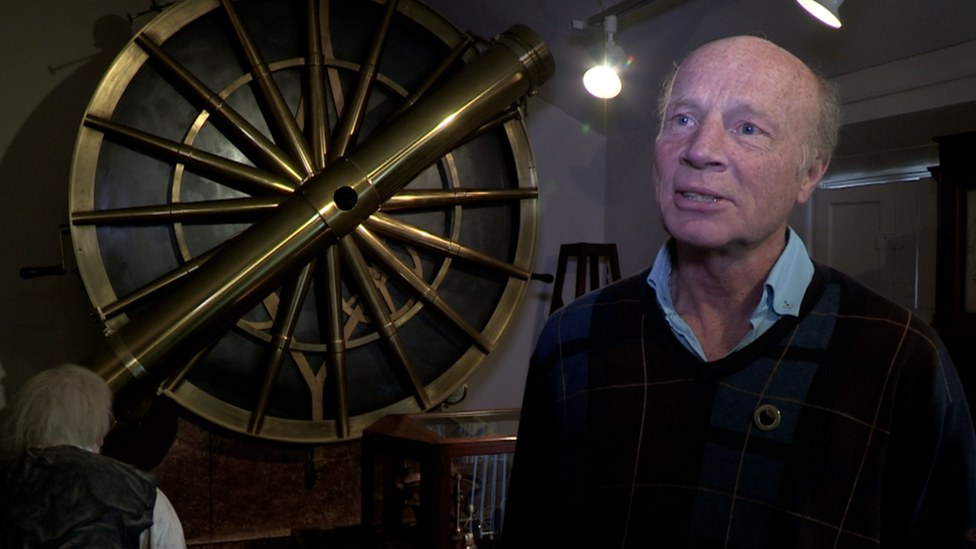
Michael Burton said there are trade-offs involved with the introduction of LED lighting
"What's important is to try and have LED that have what we call warm colours, which come in the red part of the spectrum," he said.
Lights in the blue part of the spectrum - cool colours - were bad for the eyes, he said.
"They don't adapt when you are outside and you really can't see the stars," added Mr Burton.
"If it is in the red part of the spectrum they will adapt and you'll be able to see the stars and the streets as well.
"It is quite complex. Sodium street lights emit all of their light in very narrow lines, very specific wavelengths."
'Trade-offs'
Currently, an astronomer taking a photograph through a telescope can filter out this light, said Mr Burton.
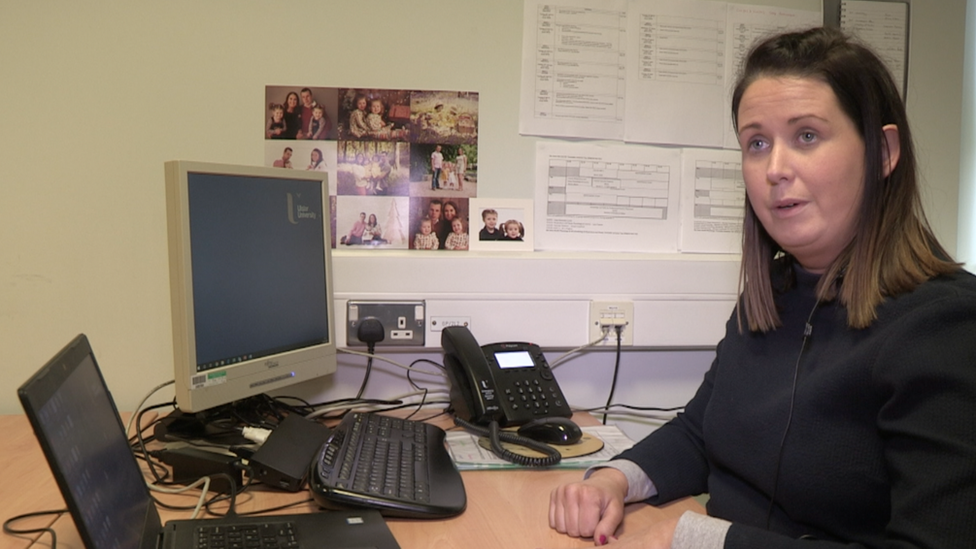
Night-time exposure to LED light can make sleep more difficult, said Lara Trainor
"But now, with a broadband LED you can't filter that out - so with a telescope you will have a worse view of the stars," he added.
"There are trade-offs involved in bringing LED lighting in."
Many of the lights have been put up in residential areas - something sleep experts believe could have an adverse impact on sleeping patterns.
'Sleep hygiene'
Lara Trainor, a lecturer in healthcare science at Ulster University, said night-time exposure to LED light can make sleep more difficult.
"It can affect the melatonin in the body, which is the sleep hormone and which plays a part in the circadian rhythm," she said.
"So you won't sleep as well if you are exposed to them."

She added: "It is really important that people have good sleep hygiene; that they aren't exposed to light before they go to bed - whether that is TVs, phones, laptops or computer screens.
"Also, if they are exposed to the LED lights they should have black-out curtains or blinds to reduce the effect on the circadian rhythm.
"Unfortunately for people who are homeless or for animals, they don't have that option so it will affect them more than someone who is living in a house."
So far about 20% of all street lights have been changed.
The Department for Infrastructure said that future installations were tied in with ever tightening departmental budgets.
So it could be some time before many of us have to decide if we are turned on, or off, by LED street lights.
- Published13 March 2017

- Published7 October 2016
